The Australian visa system can be divided into two broad categories – temporary and permanent visas. Permanent visas are further categorised into four broad streams, namely, family, economic, refugee/humanitarian, and special eligibility. Meanwhile, temporary visas cover a range of purposes including tourism, visiting relatives, study, work, and medical treatment.
Each specific type of visa is known as a subclass, and each of these subclasses have their own unique eligibility criteria which must be satisfied for the visa to be granted. Nevertheless, there are some criteria that are shared across most Australian visa subclasses. These are generally the health and character requirements, the public interest and special return criteria.
Augustine & Co. Immigration Lawyers being a full-service Australian specialist Immigration law firm, offer legal counsel in specific areas of expertise. General information on our areas of expertise can be found on our website. This free general information includes potential immigration strategies to pursue your Australian dream, the likely costs involved, the core requirements for common visas, and eligibility quizzes. The streams this information is provided on are: Family & Partner, General Skilled Migration, Business & Investment, Employer Sponsored and AAT & Federal Court applications.
Australia’s Family and Partner Visa options allow foreign de facto partners or spouses, children, and immediate family members of Australian citizens, permanent residents, or eligible New Zealand citizens to reunite and live in Australia. At Augustine & Co, we compartmentalise family-based visas into Partner Visas and Prospective Marriage Visas. We also have a separate offering for advice and support if a relationship breakdown occurs.
Regarding Australian Partner Visas, there are two further subclassifications – onshore and offshore applications. We provide general information on four common strategies we often utilize in Australian Partner Visa process.
However, please be aware that these strategies are not tailored to you and your partners’ specific circumstances. Therefore, while our website gives an overview of options available to you, you should consult with an immigration lawyer/agent prior to lodging any application as each lawful case may be different: personalised consultation.
In terms of the Prospective Marriage Visa, it is a temporary Australian visa that allows you to stay in Australia for between 9 and 15 months from date of grant, to marry your potential spouse. From this, you may then proceed to applying for an Australian Partner Visa. Frequently asked questions regarding the Prospective Marriage Visa are answered here. However, these answers are not tailored to your specific circumstances in the same way that advice from a consultation session with an Australian immigration law specialist would be.
The General Skilled Migration program is a points & invite based Australian visa pathway that enables skilled individuals or families to migrate to Australia and fill skills gaps in the Australian economy. There are three predominant visas for skilled migration to Australia, all of which require at least 65 points from the general skilled migration points table. You may complete this eligibility quiz to check your potential eligibility for these Australian visas.
The first of these skilled migration visas is the 189 Visa, which offers permanent residency and does not require an employer, State, or Territory sponsorship. The second is the 190 Visa, which also offers permanent residency but requires nomination by an Australian State or Territory government. The third option you have is the 491 Visa, which is a temporary visa that would allow you to live, work and study in a designated regional area of Australia. This Australian visa requires nomination from an eligible relative, or an Australian State or Territory. Further information on your potential skilled migration timeline is available here.
The skilled occupation lists for Australia are something that must also be understood when applying for an Australian visa through the skilled migration pathway. The Medium and Long-term Strategic Skills List (MLTSSL) is relevant to individuals who apply for any visa under any skilled migration pathway, while the Short-term Skilled Occupation List (STSOL) is relevant only to individuals who have secured a state or territory nomination to apply for a 190 or 491 Visa, and the Regional Occupation List (ROL) is only relevant to the 491 Visa. To ensure that you choose a relevant occupation to your circumstances that gives you the best prospects of a positive application outcome, we advise that you book an expert consultation.
Australian visa options include both temporary and permanent work visas to help businesses address labour shortages.
Australian temporary work visas help provide solutions for businesses to address labour shortages by sponsoring skilled workers when they are unable to source an appropriately skilled Australian worker. These include the Subclass 407 Training Visa, the Subclass 482 Temporary Skill Shortage Visa, and the Subclass 494 Skilled Employer Sponsored Regional Visa. Relevant sponsorship criteria must be met for each of these Australian visas. A general overview of this sponsorship criteria is available here. However, for personalised advice tailored to your situation we encourage you to book a consult with an Australian immigration specialist.
Permanent work visas to Australia are also available, with Australia offering several permanent residency visa options for businesses seeking employees. These include the Subclass 187 Regional Sponsored Migration Scheme Visa and the Subclass 186 Employer Nomination Scheme Visa. The 187 visa encompasses skilled workers who are nominated by an employer in regional Australia, while the 186 visa was created to allow all employers to bring foreign workers to live and work in Australia indefinitely. Again, there are a wide array of criteria that must be met for sponsorship approval. A basic overview of the requirements and answers to frequently asked questions can be found via this link. However, to save your business time and hassle, and give the best prospects of a positive outcome for your potential employee’s Australian Visa, we advise you consult an Australian immigration professional.
Australia’s business and investment immigration pathway allows entrepreneurs and professional investors to own and manage a business in Australia, conduct business and investment activities or undertake an entrepreneurial activity in Australia on a valid Australian Visa. The business and investor visas for Australia include the Temporary Business Innovation and Investment (Provisional) visa (subclass 188) and the Permanent Business Innovation and Investment (Permanent) visa (subclass 888).
The Subclass 188 has multiple streams within it. These include the Business Innovation stream, Investor stream, Significant Investor stream, Business Innovation Extension stream, Significant Investor Extension stream, Premium Investor stream, and Entrepreneur stream. Each stream has slightly different requirements for getting your Australian visa, which are explained here. The Subclass 888 also has multiple distinct streams, including the Business Innovation stream, Investor stream, Significant Investor stream, Premium Investor stream, and Entrepreneur stream. Potential immigration pathways to Australia pertaining to business and investment can be found via this link.
Nevertheless, as with all Australian visa’s, it is recommended that you consult an Australian immigration specialist to ensure you receive the best outcome possible.
AAT & FEDERAL COURT REVIEW APPLICATIONS
If a visa applicant or visa holder has had a visa refused or cancelled by the Department, they may be able to have the decision reviewed at the Administrative Appeals Tribunal (AAT) or the Federal Circuit Court. The AAT, in its merits review process, will reconsider the facts, law, and policy aspects of the original decision. The Federal Circuit Court (FCC) can only look at whether there was an error of law in the way the AAT decided your case. An “error of law” could be a mistake in the way the law has been applied to your case or the process they followed. The FCC in a judicial review application, will only consider whether the AAT made a mistake in the way they understood the law or did something they weren’t allowed to do when assessing a case.
Author
Calvin Augustine is the founding solicitor of Augustine & Co. Immigration Lawyers. He graduated with Honors from the University of London law school, before being admitted to practice in Malaysia and Australia (admitted in SA, appears in all Victorian Courts and Tribunals, at trial and appellate levels).




